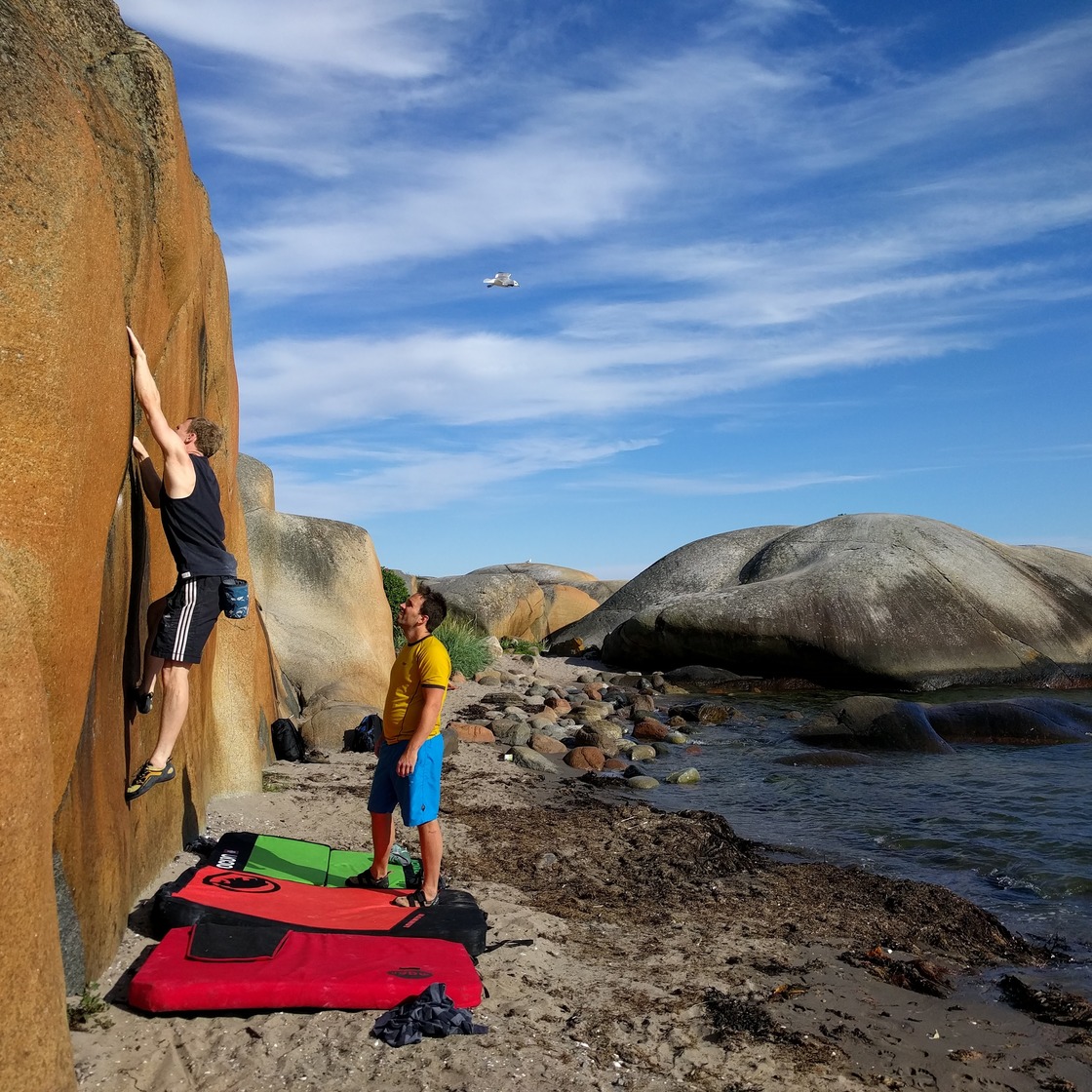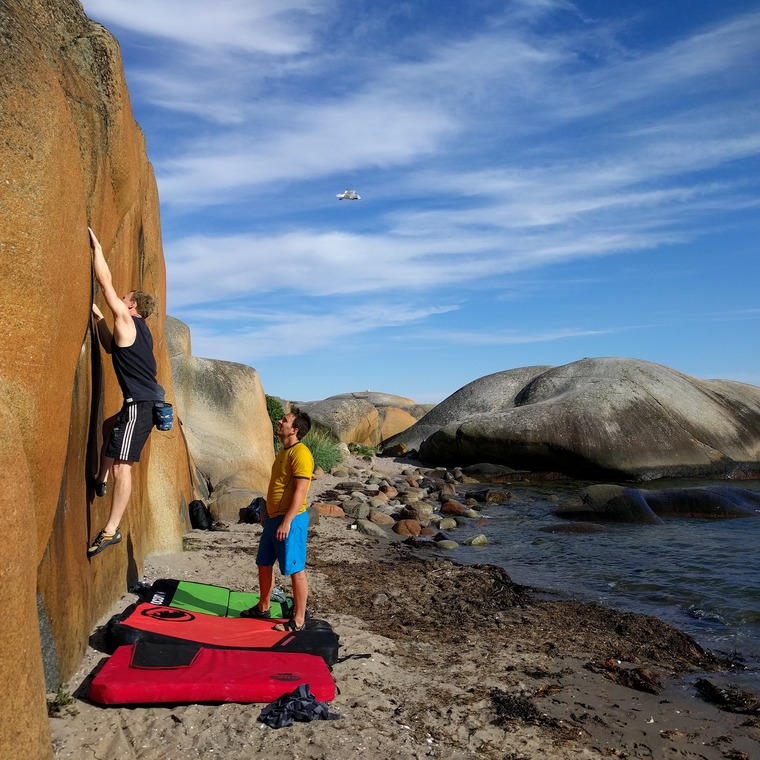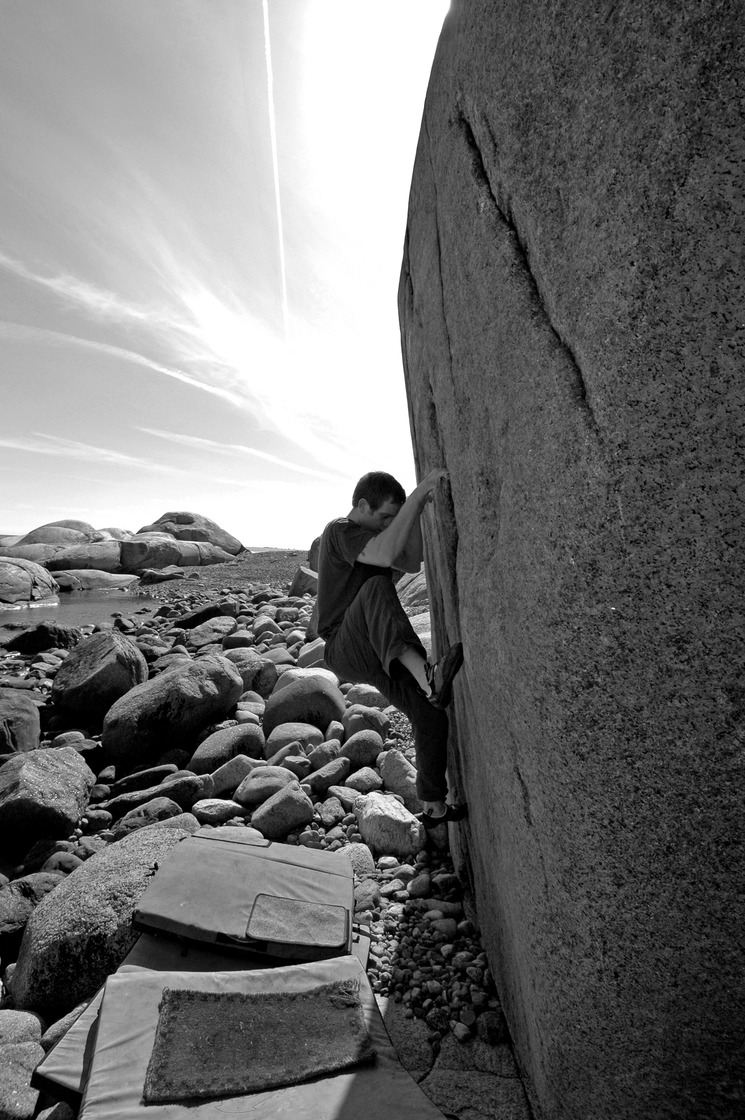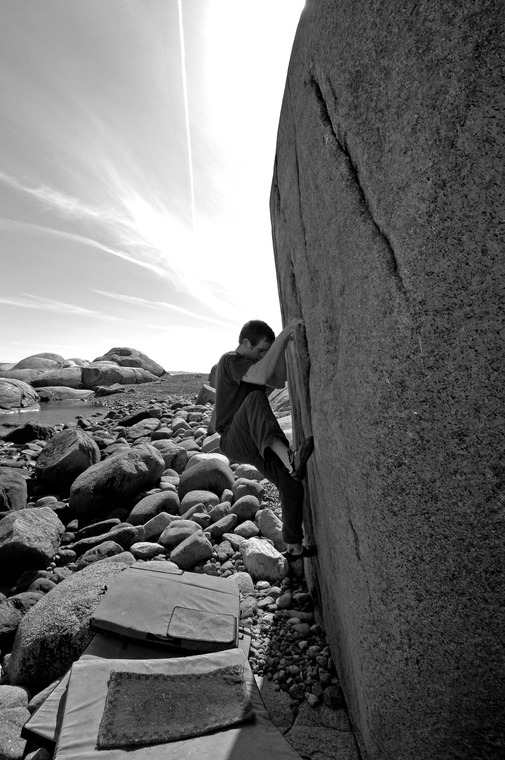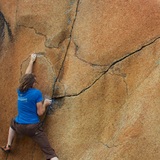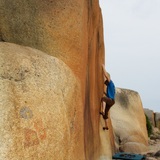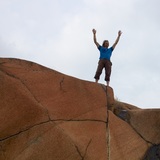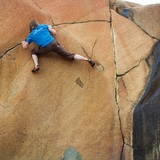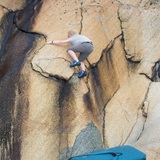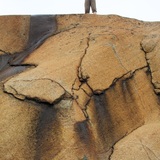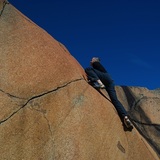Ula is one of the main seaside bouldering destinations within a day-trip-range around Oslo. And when you experience the scenery it is easy to understand why. The perfect destination for a bouldering-beach combo. If you want to stay the night there is also camping possibilities at Ula camping.
The bouldering is on everything from cliff faces to free standing blocks by the sea and in the surrounding forests. Rock quality is solid granite which spans from very smooth to very coarse depending on to what degree the surface has been shaped by waves or not.
The forest parking:
A lot of boulders is in the easy or moderate end of the grade spectrum, but you also have harder classic, like Ulabuldern and Eggløsning, and some newer hard boulders.
Tranåsen:
The little hill up Tranåsen has very nice bouldering. A bit longer and more strenuous approach than the beach at Ula, but more quiet. And the view from Tranåsen is spectacular.
North of the gravel parking in the forrest there are scattered boulders around the small hills. There is still potential for more boulders to be developed, so bring your steel brushes.
Ula Øst:
Ula Øst as it historically has been called is a beautiful bouldering area, with a lot of trees providing shade in the forest, making it good also during summer. But it has similar rock as Ula, and if you feel like you need help from the friction, it will for sure be better during winter and spring.
A bit more of a walk from the parking to the boulders than on many other areas in Vestfold, but not longer than about 20 minutes.
Rock quality is solid granite which spans from very smooth to very coarse depending on to what degree the surface has been shaped by waves or not.
Please show consideration to the other users of the area, leave no traces, remove tickmarks, and don't play music at the crag. Enjoy!
It is not easy to say for sure when the bouldering started on Ula, but there has probably been climbing on the seaside cliffs and rocks for many years. It is at least natural to imagine this considering the immediate proximity to the beach and camping. Our first reliable source is Lars Terjesen who started bouldering there in 1996 in connection with him started vacating at a cabin down there. However, he remember that there were traces of chalk on Ulabuldern the first time he was there, so climbers have obviously been there before.
Lars Terjesen cleaned and climbed dozens of boulders in the area in the following years. It was different back then in terms of giving boulders names and grades and such. This was long before online guidebooks and bouldering still had limited prevalence and need for documentation. The bouldering scene was small and information about notable ascents was communicated through the jungle telegraph.
Eventually Lars got other boulderers from Oslo down to check out the area, and they helped establish Ula as a boulder destination. Among others Chris Fossli. On a hot summer day in 1999, Lars and Chris established what would later prove to be one of the absolute classics in Eastern Norway, Eggløsning. Curiosity: the name comes from the fact that at that time they had gotten confirmation that they would become fathers (Eggløsning = ovulation in english).
The development continued into the 90s and further into the 2000s. Some of what was done has never been documented in any guide. In recent times, several lines have been established, but which is new and which has been climbed in the past is not always as easy to determine. In any case, there is potential left in the forests around Ula.
The first registered boulders in the forest north of the gravel parking was established in 2021, but it has most likely been visited by boulderers long before this.
The development of the sectors up at Tranåsen was started by Benjamin Lager and Jeppe Grüner back in january 2009. The Ula Bula sector was established in 2021.
